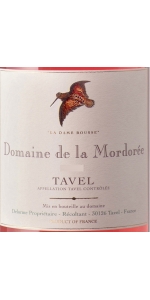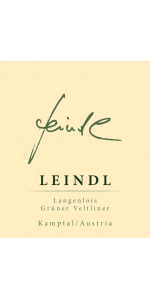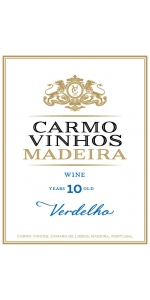Reguengo de Melgaco Vinho Verde 2022
6 bottles with free shipping for: $162.00
12 bottles with free shipping for: $264.00
| BUY MORE! SAVE MORE! | ||||||||||||||||||||
|
| Country: | Portugal |
| Region: | Vinho Verde |
| Winery: | Reguengo de Melgaco |
| Grape Type: | Albarino |
| Vintage: | 2022 |
| Bottle Size: | 750 ml |
Fresh with an intense fruity character. Very mineral wine with notes of apple, plums, peach, combined with a still dominant citric profile. Magnificent volume with an elegant and delicious unctuousness. Fantastic finish, long and aromatic. Very good balance between acidity and dryness/sweetness although the wine almost doesn’t have residual sugar.
Alcohol content: 12.5 % Vol.
pH: 3,41
Total Acidity: 6 g/L tartaric acid
Volatile Acidity: 0,36 g/L acetic acid
Average age of the vines is 20 years old, all planted on alluvium (stream deposit) consisting in gravelly and sandy soils.
Grapes were transported to the winery immediately after the harvest in small size boxes. They were smoothly pressed before fermentation in stainless-steel tanks, with temperature control. Selected yeasts were added for the fermentation.
Fish and seafood are strongly associated to the white wine consumption. With Reguengo de Melgaço Alvarinho wines it’s not different. They usually make wonderful pairings with fish and seafood main courses.
However, other pairings are also recommended.
Salads, fruit, white meats, are also great companions for Reguengo de Melgaço Alvarinhos. The volume, attack and intense flavour of these wines allow even more unconventional pairings for white wine, such as heavier meat plates.
Reguengo de Melgaço means land of the royalty. The name comes from the fact that the estate belonged to the Portuguese royal family on the XVI century from where it got its name.
Date Founded: 1998
Reguengo de Melgaço means land of the royalty. The name comes from the fact that the estate belonged to the Portuguese royal family on the XVI century.
As the property once belonged to aristocratic feudal families, the Melgaço population used to pay the tithe based on its production. This is the reason why you can find some very large “lagares” and “canastros” existing in the Quinta.
Mordoree Tavel Rose Dame Rousse is made from Grenache 60 %, Cinsault 10%, Syrah 10 %, Mourvèdre 10%, Clairette 5%, and Bourboulenc 5%.
Nose : steady rose, brilliant and limpid.
Aromas : very complex with flowers, red and white fruits aromas.
Palate : rounded, full bodied with a long lasting aniseed and fruity finish.
Ageing potential : 4 to 6 years
Surface : 9 Ha. Yield : 44 Hl./Ha. Vineyard age : 40 years Terroir : Clay / chalk and sandy with pebble stones. Harvest : by hand Vinification : 100% destemming, cold maceration during 48 h., pneumatic pressing, fermentation at 18° C. Estate bottle
Food pairing: cold meat and delicatessen, poultry, white meats, grilled meats, fried fish, fish soup, pastas, pizzas and all Asian cuisine.
Review:
"Pale watermelon in color, this wine is composed of 60% Grenache, 15% Cinsault, 15% Syrah and 10% Clairette. It has a focused nose of ripe watermelon, cherry skin, blueberry, violets and wild herbs. While the wine has plenty of structure for additional cellaring, enjoy it now with a creamy goat cheese."
- Wine Enthusiast (September 2023), 92 pts
Vilerma Blanco Ribeiro is made from 80% Treixadura, 6% Torrontes, 4% Godello, 4% Albariño, 3% Loureira and 3% Lado
Ribeiro blanco is produced from estate-grown grapes using traditional winemaking.
Pale yellow color with green highlights.
Intense white fruit aromas when young, it develops complex nuances after a few years in the bottle.
In the mouth it is ample, full and pleasant with a long and fruity finish.
Fermentation in Stainless Steel tank at controlled temperature.
Leindl Gruner Veltliner Langenlois is made from 100 percent Gruner Veltliner.
This classic Gruner Veltliner comes from the famous wine-growing region of Langenlois. A very typical fruity and fresh Gruner Veltliner offering green apples, juicy, minerality, a pleasant body and a good length. It is ideal with a wide range of dishes.
Cold Fermentation.
Aged on the lees for 6 months in Stainless Steel tank. No Oak. No ML.
Produced from vines of 5-20 years old on slate soils.
Carmo Vinhos Madeira Verdejo 10 Yr an amber medium dry wine with medium body and acidity. Rich aroma and flavor of dried fruits, nuts and caramel, showing a vibrant character, lengthy and well balanced. An excellent aperitif or as an accompaniment to pates.
Lima Vinho Verde Rose is made from 75% Souzao, 15% Borraçal and 10% Espadeiro.
It is a blend of 75% Souzao (same as Vinhao), 15% Borraçal (which is also known as Caino Tinto) and 10% Espadeiro:
Souzão (or Sousão or Vinhão) is a Portuguese wine grape that is used in the production of port wine. While originating in the Minho regions, it is used primarily in Australia, California and South Africa. In Portugal, it is also an authorized planting in the Douro, and Dão-Lafões area (Vinho do Dão). The grape is known for the deep color it produces in a wine as well as its coarse and raisiny taste.
Caiño tinto (also known as Borraçal) is a red Galician wine grape variety that is also grown in Portugal's Vinho Verde wine region where it is known as Borraçal. In Spain, it is a permitted variety in the Denominación de Origens (DOs) of Rías Baixas and Ribeiro where it produces highly perfumed wines with noticeable tartness and high acidity.
Espadeiro is a red Portuguese wine grape planted primarily in the Minho region for making Vinho Verde. It is also grown across the border, in Spain, in Galicia where it is used to make light bodied wines.
SALE
Palacio de Bornos Verdejo Rueda is made from 100% Verdejo.
Mechanical and manual harvest. Fermentation takes place in stainless steel tanks at controlled temperature of 15-16º C for 18 to 20 days. Cold stabilization, filtration. Clay and limestone with small round stones.
Straw-like yellow color with fresh green tones.
Hugely aromatic, with tropical fruit, tangerine, lemongrass and lemon thyme. Fruity notes with anise and minerals, typical of the Verdejo grape. Full in the mouth, well structured, dense and persistent with a lingering aftertaste. The wine has great length and a delicious mouth-filling richness, and finished with a precise acid cut.
As a light aperitif, ideal at any time of the day, with a tapas or small snack, with Pasta al Pesto, Mousse of Tuna fish and lime..
Enjoy with everything from sushi to spicy Cajun shrimp!
Carmo Vinhos Madeira Bual 10 Yr has depth, medium body, acidity and sweetness. Lively and full with delicious flavors of caramel and toffee and a lasting aftertaste. Delicious as a dessert wine. This wine demonstrates the perfection of the blender's art and is to be savored.
Carmo Vinhos Madeira Malmsey 10 Yr is richest style of Madeira. With a deep amber color, this intense wine has a complex flavor of walnuts, dried fruits, coffee and caramel. Full body hiding the acidity and a very long finish. An excellent accompaniment to coffee.
Carmo Vinhos Madeira Sercial 10 Yr is the driest style of Madeira, a light bodied wine with a distinctive nutty nose. An excellent apertif. The concentration at this age has produced a very attractive and interesting wine, with a long finish.
- back
All older vintage wines have been purchased from a single collectors cellar. Pictures can be requested before shipment.
Marques de Casa Concha Heritage is made from 84% Cabernet Sauvignon, 12% Cabernet Franc, & 4% Petit Verdot.
Deep, dark red in color with lush flavors of cherries, blackcurrants, blackberries, cedar, and a bit of black tar. It shows a tremendous concentration of flavors and a smooth, almost silky texture framed by a firm tannic structure that truly stands out at the beginning of the long finish.
This wine pairs beautifully with grilled, roasted, or braised red meats and game in sauces that have a bit of acidity, with tomato or wine or with herbs such as rosemary, thyme, and bay leaf. A perfect wine for most cheeses.
100% estate grown red blend from renowned Puente Alto terroir. Chile’s most acclaimed DO. Upon arriving at the winery, the grapes are destemmed and crushed for fermentation, which takes place in closed stainless steel tanks with daily pump overs throughout the entire 10-day process. The new wine remains in contact with its skins for approximately 10 days, when it is devatted and malolactic fermentation is allowed to take place naturally.
The wine then underwent 16 months in French oak barrels, 40% first use, 60% second use.
El Mariscal vineyard is 600 meters above sea level and is made up of 52.95 hectares, of which 46.23 correspond to Cabernet Sauvignon, 4.52 to Cabernet Franc and 2.20 to Petit Verdot; and it has a density of 5,500 plants/ha, vines that come from mass selection and are mostly on loam. Meanwhile, Don Melchor vineyard is 650 meters above sea level and is made up of 125.96 hectares, of which 112.67 correspond to Cabernet Sauvignon, 1.28 to Cabernet Franc, 2.45% to Merlot, 1.28 to Petit Verdot and 8.28 to ground in rotation. It has a density of 2,000 to 4,000 plants/ha, and the new one (20%), planted between 2004 and 2017 and with a density of 8,000 plants/ha. The vines come from pre-phylloxera mass selection and are on loam. The vineyards are located in the Puente Alto denomination of origin, on the northern bank of the Maipo River, specifically on the river’s third alluvial terrace, which is one of the oldest and that instills great character and elegance to the wines that come from there. The soils are of alluvial origin, rocky, poor in nutrients, and highly permeable due to the amount of gravel in the subsoil, which enables excellent drainage. The climate is semi-arid Mediterranean with a strong influence of the Andes Mountains. This is the coldest part of the Maipo Valley. Its pronounced daily temperature oscillation of approximately 18ºC extends the grape ripening process, concentrating and intensifying its aromas.
Review:
Black pepper and cherry give way to hints of chocolate after some aeration in the glass. The same notes show on the palate and blend with bell pepper. This red comes from the alluvial soils in the D.O. Puente Alto and is full bodied, with a firm structure. Moderate acidity is enough to freshen up the finish.
-Wine Enthusiast 92 Points















